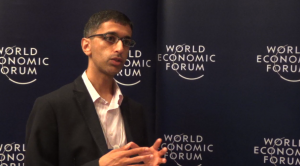MANILA, Philippines—In the age of internet and social media, information technology can also be used in fighting corruption, a senior director of the World Economic Forum (WEF) said.
“Corruption can really be a very difficult thing to quantify, and also difficult to get hard data around it precisely because of what it is which is activity that happens in a grey zone or in a black market that is outside of a normal process,” Senior Director Elaine Dezenski, Head of Partnering Against Corruption Initiative of WEF, said in an exclusive interview with INQUIRER.net on Tuesday.
“On the issue of transparency, this is where technology really plays a role through its tools for social media that give a more transparent and inclusive voice to the public,” she said.
Dezenski pointed to the corruption reporting website www.IPaidABribe.com in India as a prime example of how the public can hit back against corruption even on the lowest levels of government.
The website has received more than 26,000 reports of bribes across 671 cities throughout India as of May 20, 2014.
The government agency with the highest reported bribes paid is with the police at 5,900 reports.
The website encourages the public to report bribe and even specific details such as “nature, number, pattern, types, location, frequency and values of actual corrupt acts.”
“Your reports will, perhaps for the first time, provide a snapshot of bribes occurring across your city. We will use them to argue for improving governance systems and procedures, tightening law enforcement and regulation and thereby reduce the scope for corruption in obtaining services from the government,” it said in their website.
The website also allows the public to report the government officials who refused receiving bribes so they can be “whitelisted.”
“It’s very interesting to see social media being used as a way to track not only bad behavior of public officials but also good behavior. Blacklisting certain officials but also whitelisting people who are doing the right thing,” Dezenski said.
“I think in terms of providing a voice [to the public] we are already seeing the effects of that on political processes on government institutions and it’s quite exciting to see that,” she said.
Dezenski noted a good example of the fight against corruption in Mongolia where the president encouraged businesses to join government’s efforts to counter corruption.
“It’s interesting to look at Mongolia where the president has been very forceful in his desire to take corruption out of the process. He invited the WEF to help him set up a local network of companies which signed on to the principles for countering corruption,” Dezenski said.
“We have about 168 companies in Mongolia who signed onto the same principles that many global companies follow and the idea is to begin that reform process within the private sector but with the support of the public sector because you really need to have both in place. It goes a lot further if the private sector sees that the government is committed and vice versa,” she said.
RELATED STORIES


